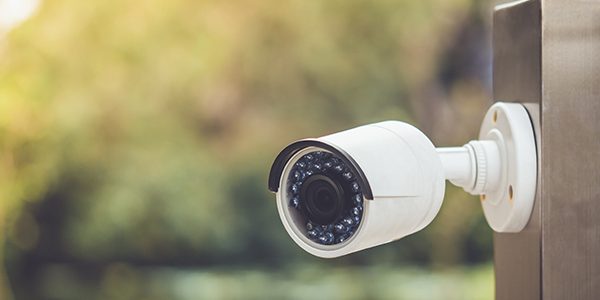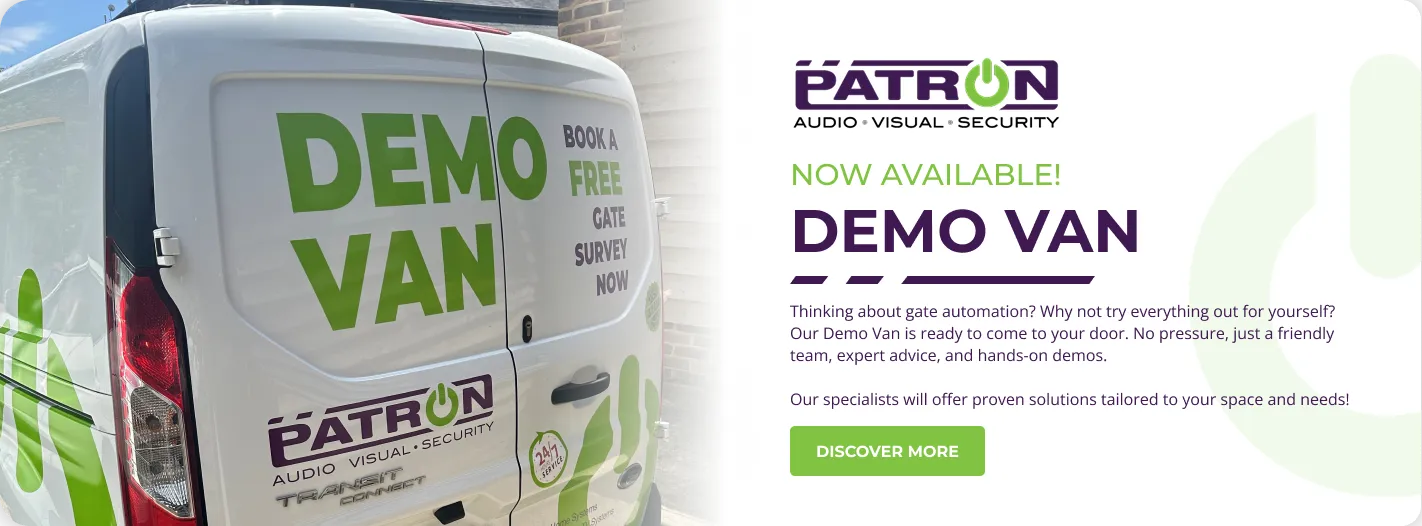What if you could keep an eye on your home or business no matter where you are? That’s the power of CCTV monitoring. A CCTV system isn’t just there to sit pretty on a wall—it’s your extra set of eyes, your silent security guard, your first line of defence. But how often do you check it?
Think about it. What good is footage after something happens? Right! What if an alert popped up right now? Would you be able to check your cameras in seconds, or would you be scrambling to remember the app password? That’s the difference between having CCTV and actually using it.
This guide will show you exactly how to take control of your security—because real protection starts with knowing how to use your CCTV system effectively. Live feeds, motion alerts, remote access, smart integrations—you’ll learn how to turn your CCTV into an active security tool, not just a background prop.
At Patron Security Ltd, we do more than install CCTV—we help you take full control of your security. Call us on 01233 334135 or email enquiries@patronltd.co.uk for expert advice or a smarter surveillance setup.
Patron Security Ltd specialises in cutting-edge security and surveillance solutions that keep homes and businesses safe. Contact us today to learn more.
How To Effectively Monitor Your CCTV System
Cameras recording 24/7 won’t help if no one’s paying attention. Effective monitoring isn’t just about checking footage—it’s about real-time alerts, remote access, and a system that works when you need it most. Whether you’re keeping an eye on your home, business, or commercial space, here’s how to monitor your CCTV like a pro.
1. Master Remote CCTV Access: Monitor Anytime, Anywhere
Gone are the days of staring at static security monitors all day. You can check live feeds from anywhere using a phone, tablet, or computer with remote CCTV access.
- Mobile surveillance monitoring: View live footage on your phone using CCTV mobile applications. Get instant alerts when motion is detected.
- Web and desktop access: Login from any device using your DVR/NVR internet setup for a bigger, clearer view.
- Cloud-based surveillance: Store and access recordings remotely for added security and flexibility.
Pro Tip: Ensure your network is secure with encrypted connections and multi-factor authentication to prevent unauthorised access. If you’re new to CCTV technology, check out the CCTV basics to ensure you’re using your system effectively.
2. Real-Time CCTV Alerts: Stay Notified, Stay Secure
A CCTV system shouldn’t just record—it should notify you the moment something unusual happens.
- Motion detection alerts: Get notified instantly when movement is detected in restricted zones.
- AI-powered smart alerts: Some systems can differentiate between a person, vehicle, or animal, reducing false alarms.
- Two-way audio monitoring: Speak directly through certain cameras to warn off trespassers.
Why This Matters: A delayed response can mean the difference between stopping an intruder and reviewing footage after a break-in.
3. Optimise Your CCTV Network Configuration For Smooth Monitoring
A weak network can cause lags, buffering, and downtime—making your security system unreliable.
- Upgrade your internet speed: A slow connection will lead to delayed footage and broken streams.
- Prioritise wired over wireless (if possible): Wireless CCTV monitoring is convenient but can be disrupted by interference. Wired connections offer better stability.
- Use a dedicated network for CCTV: Prevent your security system from competing with other devices for bandwidth.
Pro Tip: Set up IP camera remote viewing on a separate VLAN (Virtual Local Area Network) to keep hackers out of your security feed.
4. Leverage Smart Surveillance Features For Maximum Efficiency
Modern CCTV systems do more than just record. Use advanced features to make monitoring easier:
- PTZ (Pan-Tilt-Zoom) control: Manually adjust camera angles to track movement in real-time.
- Scheduled recording and playback: Save storage by recording only when needed.
- Facial recognition and AI detection: Identify individuals and automate alerts for suspicious activity.
- Smart home and business integration: Connect cameras with home automation systems, alarms, and access controls.
Why This Works: Automation reduces manual monitoring and ensures threats are detected before they escalate.
5. Secure Your Surveillance System From Cyber Threats
Hackers targeting security cameras isn’t just a movie plot—it happens in real life. Surveillance system security is crucial to prevent cyber breaches.
- Change default passwords: Weak passwords are an open invitation for hackers. Use strong, unique passcodes.
- Enable two-factor authentication (2FA): Adds an extra layer of security for remote access.
- Update your firmware regularly: Manufacturers release security patches to fix vulnerabilities—don’t ignore them.
- Use a secure VPN for remote access: Avoid logging into your CCTV system from public or unsecured Wi-Fi networks.
Warning: A compromised CCTV system can be used against you—make security a top priority!
6. Troubleshooting Common CCTV Monitoring Issues
Even the best systems run into problems. Here’s how to fix the most common ones:
- Live feed not loading? Check the internet speed, router settings, and network congestion.
- Blurry video? Clean the camera lens, adjust the resolution settings, and ensure proper lighting.
- Remote access not working? Verify your DVR/NVR internet setup, update your app, and check firewall settings.
- Motion alerts not triggering? Adjust sensitivity settings and ensure motion detection zones are set up correctly.
Quick Fix: Restart your system if all else fails—sometimes, a simple reboot resolves software glitches.
CONTACT PATRON SECURITY
Take Control Of Your CCTV Monitoring With Patron Security Ltd
Patron Security Ltd provides cutting-edge CCTV solutions for seamless monitoring and enhanced security. With over 14 years of industry expertise, our systems offer remote CCTV access, real-time alerts, and secure surveillance, ensuring your property is always protected.
Whether you need wireless CCTV monitoring, mobile surveillance, or advanced AI-powered security, our team delivers professional installation and support for homes and businesses. Call 01233 334135 or email enquiries@patronltd.co.uk to discuss your requirements or book a site survey.
FAQs
How can I access my CCTV cameras remotely?
You can access your CCTV cameras remotely using IP camera remote viewing through mobile apps or web platforms. Ensure your DVR/NVR is connected to the internet and properly configured. A secure CCTV app from your provider will allow real-time access.
What are the best mobile apps for CCTV monitoring?
Some of the best CCTV mobile applications include Hik-Connect, iVMS-4500, Reolink, and Dahua DMSS. These apps provide live streaming, playback, and real-time CCTV alerts on your smartphone. Choose one that is compatible with your CCTV system.
How do I ensure my CCTV system is secure from unauthorised access?
Use strong, unique passwords and enable two-factor authentication if available. Keep your software updated and avoid accessing your system on public Wi-Fi. Restrict access to trusted devices and regularly review login activity.
What should I do if my CCTV footage isn’t accessible online?
Check if your DVR/NVR internet setup is active and your app is updated. Ensure your cameras are online and your network firewall isn’t blocking access. If issues persist, restart your system or contact your provider for support.
Can multiple users monitor the CCTV system simultaneously?
Yes, most secure video surveillance systems allow multiple users to access the feed. Assign user roles with permissions, and ensure your network can handle multiple connections. A professional CCTV network configuration can improve efficiency.


